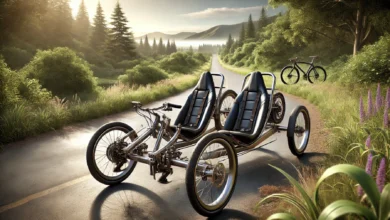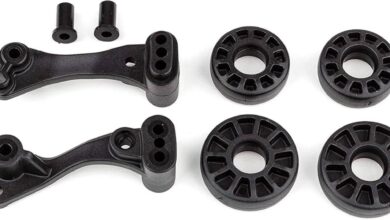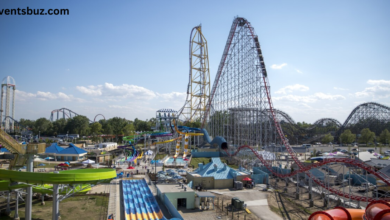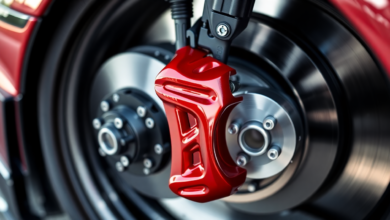Annapurna Circuit Trek Packing List: The Ultimate Guide for Your Trekking Adventure

The Annapurna Circuit Trek is one of the most popular trekking routes in Nepal, known for its stunning mountain views, diverse landscapes, and rich cultural experiences. However, trekking through this route requires careful preparation, especially when it comes to packing. The varying weather conditions, altitude changes, and long trekking days make packing a crucial part of your journey.
This comprehensive Annapurna Circuit Trek Packing List will guide you on what to bring to ensure a safe, comfortable, and memorable trek. Additionally, we will discuss the Annapurna Circuit Trekking Cost Estimate so that you can plan your budget accordingly.
Why Is the Annapurna Circuit Trek So Popular?
Before diving into the specifics of what to pack, it’s essential to understand why the Annapurna Circuit Trek is a must-do for trekkers worldwide.
- Diverse Landscape: The trek offers a variety of landscapes, from tropical forests and rice terraces to alpine meadows and glacial moraines.
- Breathtaking Views: You’ll experience stunning views of snow-capped peaks such as Annapurna I, Annapurna South, Machapuchare, and Dhaulagiri.
- Cultural Diversity: The trek takes you through traditional villages inhabited by diverse ethnic groups, including Gurungs, Thakalis, and Manangis.
- Thorong La Pass: At 5,416 meters (17,769 feet), Thorong La Pass is the highest point of the trek and provides panoramic views of the surrounding peaks.
Now that you understand the allure of the trek, let’s explore what you need to bring for the adventure.
Annapurna Circuit Trek Packing List: Essentials for Your Trek
Preparing for the Annapurna Circuit Trek requires careful planning and the right gear to ensure a comfortable and successful journey. This Annapurna Circuit Trek Packing List will guide you through the essentials needed for an unforgettable trekking experience in the Himalayas.
1. Clothing: Dressing for the Conditions
The Annapurna Circuit Trek takes you through various climates, from hot and humid regions to freezing cold at high altitudes. Packing the right clothing is crucial to ensure your comfort and safety throughout the trek.
Base Layer
A moisture-wicking base layer is essential to keep sweat away from your skin, keeping you dry and comfortable during the trek.
- Tops: Lightweight, long-sleeve, moisture-wicking shirts made from synthetic materials or merino wool.
- Bottoms: Moisture-wicking pants that are breathable and comfortable.
Mid Layer
As you ascend, the temperatures will drop. A warm mid-layer will provide necessary insulation.
- Fleece or Down Jacket: A lightweight fleece or a down jacket is ideal for warmth without adding too much weight.
- Insulating Pants: Light insulating pants will keep you warm during the cold evenings or in higher altitudes.
Outer Layer
The weather can be unpredictable, with rain and wind at lower altitudes, and snow and freezing temperatures at higher ones.
- Waterproof Jacket: A high-quality, breathable rain jacket will protect you from rain and wind.
- Waterproof Pants: Waterproof pants are essential for trekking in wet conditions.
Trekking Pants and Shorts
For the lower altitudes, bring lightweight trekking pants and a pair of comfortable shorts for warmer days.
Warm Accessories
As you trek higher, the temperature drops significantly, especially at night. It’s essential to pack:
- Warm Hat: A wool or fleece hat that covers your ears.
- Gloves: Insulated gloves to protect your hands from the cold.
- Scarf/Neck Gaiter: Protect your neck and face from wind and cold.
Socks and Footwear
The right socks and footwear are essential to prevent blisters and provide comfort during long days on the trail.
- Socks: Merino wool or synthetic socks are ideal as they wick moisture away from your feet and reduce the risk of blisters. Pack several pairs, including a few liners.
- Trekking Boots: Choose waterproof, sturdy, and comfortable boots that are well-broken in before the trek. Avoid new boots that might cause discomfort.
2. Backpack and Sleeping Gear
The weight of your pack will significantly affect your comfort on the trek. Your sleeping gear is also crucial for a good rest each night.
Backpack
A backpack with a capacity of around 40-50 liters is ideal. It should be lightweight, with a padded waist belt and shoulder straps to reduce pressure on your back.
- Hydration Bladder: Consider a hydration system to help you drink water easily while trekking.
- Rain Cover for Backpack: A rain cover will protect your gear during the unpredictable weather.
Sleeping Bag
At higher altitudes, temperatures can drop well below freezing. A 4-season sleeping bag is essential for ensuring warmth and comfort at night.
Sleeping Pad
An inflatable sleeping pad will add comfort and insulation, helping you sleep well in teahouses or campsites.
3. Trekking Gear
The following gear is essential for your trek, helping you stay balanced, safe, and efficient on the trail.
Trekking Poles
Trekking poles are vital for stability, especially on steep or rocky paths. They reduce stress on your knees and improve your balance on uneven terrain.
Headlamp
A headlamp is indispensable for early mornings, late evenings, or power outages in teahouses. Pack extra batteries and ensure your headlamp is lightweight and comfortable.
Water Bottle and Purification System
Dehydration can be a significant concern at higher altitudes. A reusable water bottle or a hydration system is necessary to stay hydrated. You’ll also need a water purification method (like iodine tablets or a UV water purifier) as some water sources on the trek may not be safe to drink.
Sunscreen and Lip Balm
The high-altitude sun can be harsh. Protect your skin and lips with a broad-spectrum sunscreen and SPF lip balm to prevent sunburn.
4. Personal Items
Don’t forget the personal items that will keep you comfortable, healthy, and connected.
First Aid Kit
A basic first aid kit with essentials such as band-aids, antiseptic cream, pain relievers, and any prescription medications you need is essential for your journey.
Toiletries
Keep your toiletries light and minimal. Pack travel-sized soap, toothpaste, toothbrush, and toilet paper. Wet wipes are also handy for cleaning yourself on the go.
Camera/Smartphone
Capture the beauty of the Annapurna Circuit with a camera or smartphone. Make sure it’s fully charged, and bring a power bank to charge it during the trek.
Travel Insurance and Identification
You’ll need travel insurance to cover unexpected medical emergencies, and always carry your passport or a copy of it with you.
5. Miscellaneous Items
A few other items can make your trek more comfortable and convenient.
- Multi-tool: A small knife or multi-tool can be useful for various tasks.
- Cash: While most places accept cash, you should bring some Nepali Rupees for small purchases along the way.
Annapurna Circuit Trekking Cost Estimate: Budgeting for Your Trek
The Annapurna Circuit Trek is a fantastic and affordable trekking experience, but costs can vary depending on your choices, such as whether you hire a guide, porter, or stay in luxury accommodations. In this section, we’ll break down the main costs associated with the trek.
1. Permits and Entry Fees
Before you start your trek, you’ll need to obtain the required permits:
- Annapurna Conservation Area Permit (ACAP): NPR 3,000 (USD 25)
- TIMS (Trekkers’ Information Management System): NPR 1,000-2,000 (USD 10-15)
2. Accommodation and Meals
The cost of accommodation and food along the Annapurna Circuit Trek is quite reasonable. Most trekkers stay in teahouses, which offer basic amenities, including meals and lodging.
- Teahouse Accommodation: NPR 200-600 per night (USD 2-5)
- Meals: The cost for food is generally around NPR 500-1,500 per day (USD 5-15), depending on what you order. Meals will be more expensive at higher altitudes.
3. Guide and Porter Costs
While hiring a guide is optional, it’s highly recommended for safety and to enrich your cultural experience.
- Guide: Hiring a guide typically costs NPR 3,500-4,500 per day (USD 30-40)
- Porter: A porter will help carry your gear and costs around NPR 2,500-3,000 per day (USD 20-25)
4. Transportation
Getting to the start and end points of the trek can incur some costs:
- Bus/Jeep to Besi Sahar: NPR 500-1,000 (USD 5-10)
- Jeep to Jomsom: NPR 1,500-2,500 (USD 15-25)
5. Equipment Rentals
If you don’t own certain gear, you can rent equipment in Kathmandu or Pokhara:
- Sleeping Bag: NPR 200-500 per day (USD 2-5)
- Trekking Poles: NPR 100-300 per day (USD 1-3)
6. Miscellaneous Costs
- Visa Fees: USD 30 for 15 days, USD 50 for 30 days, and USD 125 for 90 days.
- Travel Insurance: Costs vary depending on your provider and coverage.
Estimated Total Cost for Annapurna Circuit Trek
- Budget Option: USD 500-600
- Mid-Range Option: USD 800-1,000
- Luxury Option: USD 1,500-2,000+
Final Thoughts
The Annapurna Circuit Trek is a rewarding and challenging adventure that requires careful preparation, both in terms of packing and budgeting. With the right gear, a solid understanding of the costs involved, and a positive attitude, you’re ready to embark on this once-in-a-lifetime trek.
Make sure to plan ahead, keep your packing light but efficient, and don’t forget to budget for the essentials. Whether you’re traveling on a shoestring or indulging in luxury, the Annapurna Circuit Trek is sure to leave you with memories to cherish for a lifetime.
Enjoy your journey through the majestic Himalayas!





